The Pyrador is a Great Pyrenees Lab mix. A hybrid designer dog combining the intelligent and active purebred Labradors with the loyal and protective Great Pyrenees. The Pyrador can make a great family dog for an active home that has plenty of time to dedicate to exercise, training, and socialization. This is a large mix that needs plenty of space and won’t suit apartment life.
Contents
- History and original purposes
- What do they look like?
- Pyrador temperament traits
- Pyrador puppy breeders
Your Pyrador should be long lived and healthy provided you buy your puppy from a litter with health tested parents. If he inherits his Labrador parent’s zest for energy, then he could also be prone to chewing and hyperactivity. Of course, with a mixture of exercise, training, and early socialization, the Pyrador will make a wonderful family companion!
Origin of the Great Pyrenees Lab Mix
The Pyrador has a strong working history, bred from two very different lines of intelligent and cooperative dog breeds.
The Lab parent started out as a retrieving breed alongside fishermen in Newfoundland, Canada. Now in modern times, the Lab is most often a devoted family pet. But they are also excellent service animals. Their intelligence and loyalty make them excellent support animals to their human counterparts.
The Great Pyrenees is believed to have originated from the Pyrenees Mountains of southern France and Northern Spain. This is an extremely old breed, used for centuries by shepherds to guard livestock, where their bravery in going up against predators such as wolves and bears became legendary!
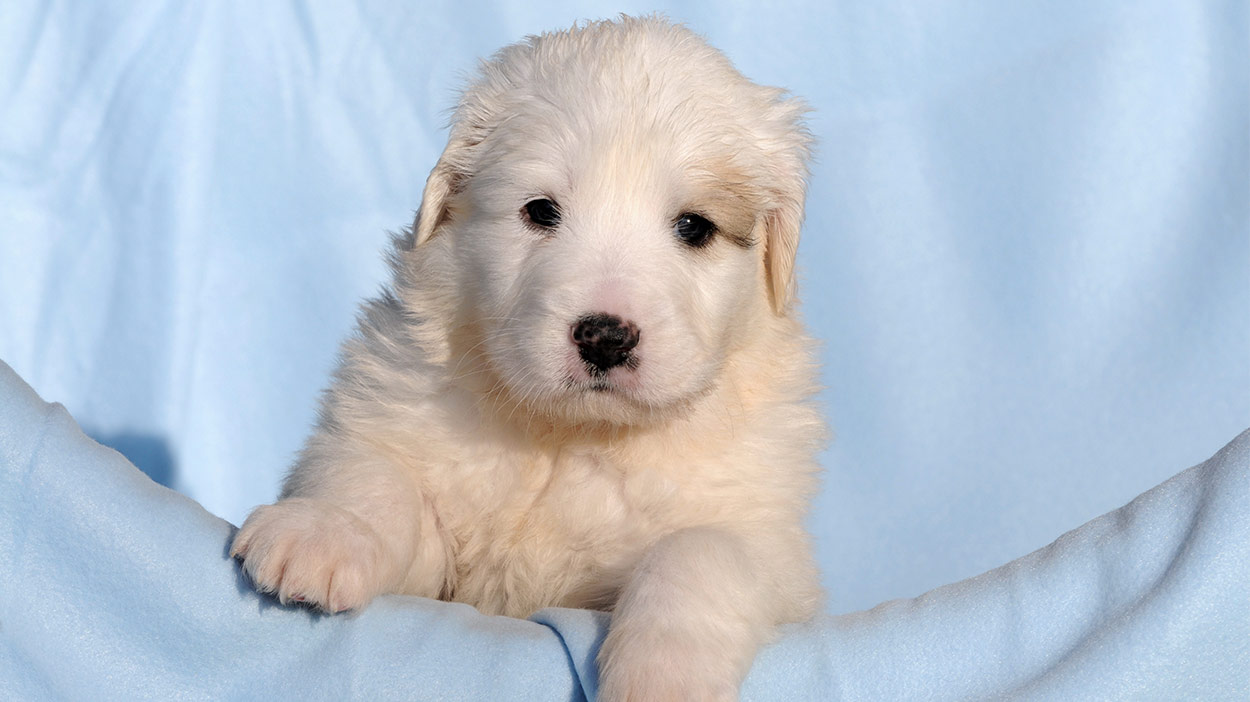
Pyrador Appearances
The Pyrador is a large dog with an even build and long muzzle. The ears hang low and floppy, and the coat tends to be short in fist generation mixes. You can increase the likelihood of certain colors by choosing parents with the same fur color. For instance, a Great Pyrenees black Lab mix! It’s possible to get black, yellow or chocolate Labs. With each color coming in a variety of shades. The Great Pyrenees, on the other hand, has a mostly white, shaggy coat, that can have slight color variations in some areas, including yellow, badger, reddish brown, tan and gray.
Grooming and Shedding
The Lab and the Great Pyrenees are shedders, so their pups will need brushing at least once a week. More in molting season. No matter which parent your puppy takes after, you can expect a lot of shedding. This isn’t the most suitable breed if you struggle with allergies.
For the most part, the Labrador Pyrenees mix should be easy to care for as far as grooming goes. Both of the Pyrador’s purebred parents’ coats are naturally weather and dirt resistant, which means bathing your Pyrador will only be required on occasion.
Despite the high-maintenance look of the Great Pyrenees’ thick white coat, he is actually a pretty easy dog to care for and groom, and so is the Lab. Groom your Pyrador once or twice a week to keep their coat in its best condition. Regular nail trimming and ear cleaning are also advised.
Great Pyrenees Lab Mix Size
Labradors can grow up to 25 inches tall and weigh up to 80 lbs. An adult Great Pyrenees looks bigger than he is because of his thick, durable coat. But, he is still a large dog, who will grow to be 25- 32 inches tall and can weigh up to 100 pounds.
An adult Pyrador will be anywhere between 22-32 inches tall and weigh anywhere from 55-100 pounds.
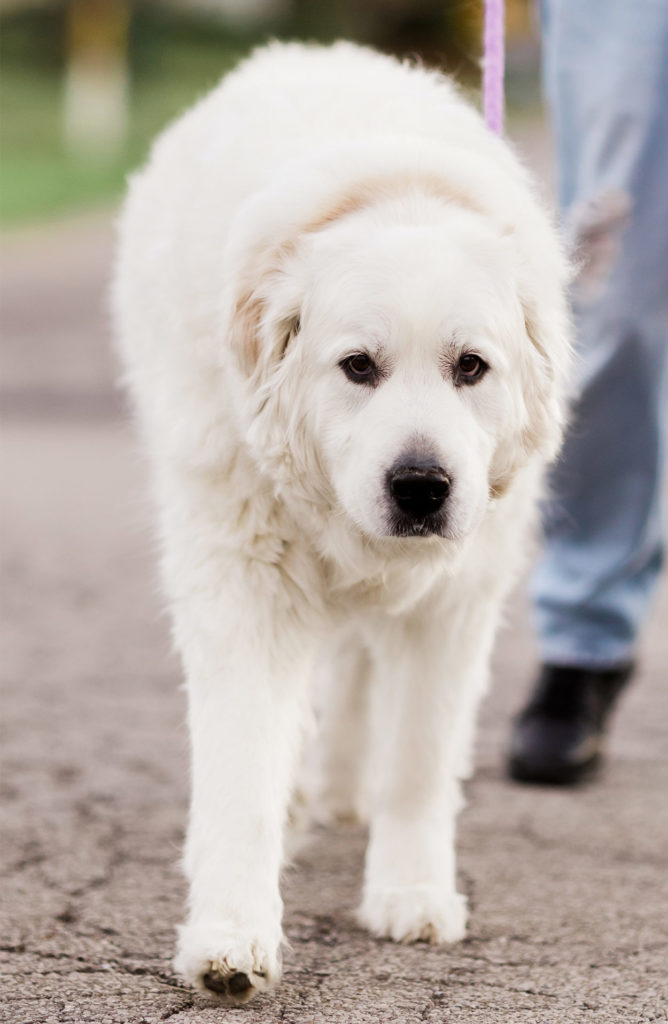
Great Pyrenees Lab Mix Temperament
Labs are famous for their intelligence and cooperative natures. They absolutely love being in the center of fun family activities! But, if left to get bored, they can be destructive. The Great Pyrenees is consistently and affectionately renowned as a gentle giant who loves to play and especially enjoys the snow! He is most famous for his mild-mannered temperament, but he is able to move swiftly to address anything he may consider to be a threat to his family.
The Pyrador will be an intelligent, playful, family-friendly dog who enjoys being with his people and requires plenty of exercise.
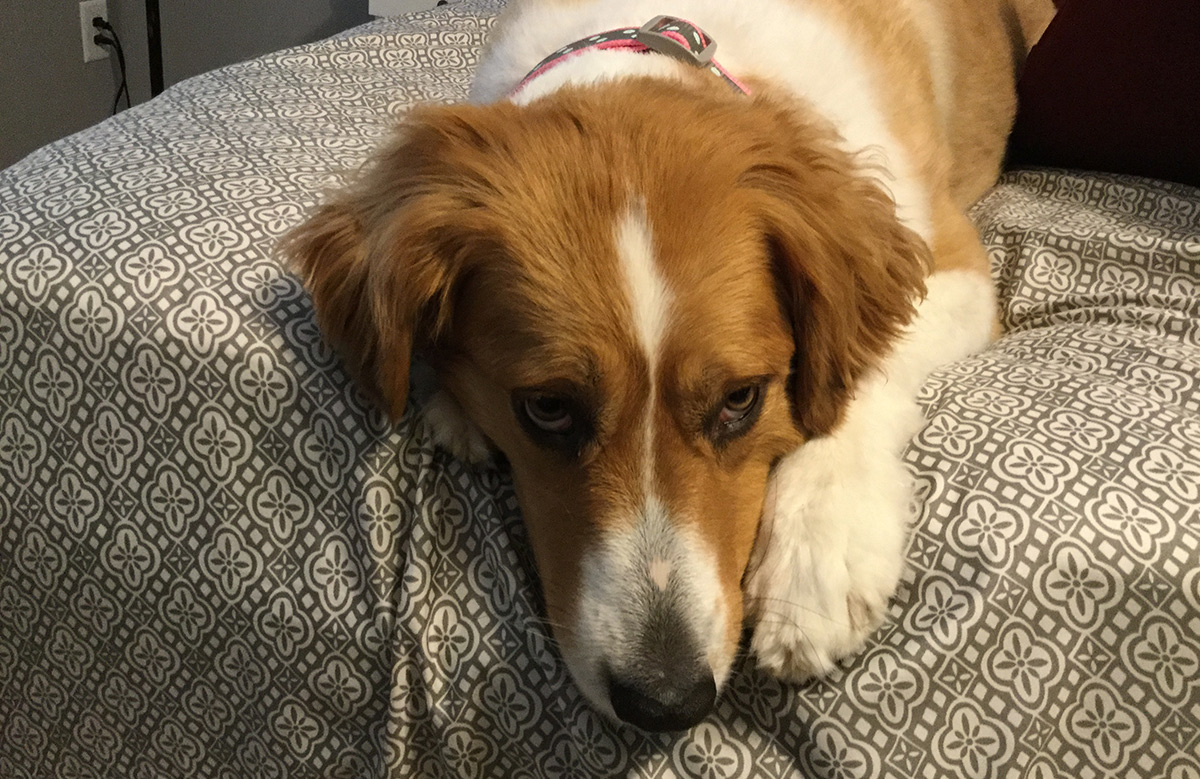
Guarding Instincts
The Great Pyrenees does make a wonderful family dog, and he is patient and gentle with his own family’s children. But, he takes his watch-dog role rather seriously, so he should be supervised with outsiders. This is a trait that can be passed on to the Great Pyrenees Lab mix. And, in some circumstances, guarding instincts and loyalty can stray into aggression. Especially towards strangers and other animals.
Pyrador Socialization
Socialization involves introducing a puppy to as many new experiences as possible during their fear period. This period lasts from around 8 weeks old to 16 weeks at the very latest. So, during this time, make sure your Pyrador has positive experiences with strangers, other dogs, other animals, and any places of things he will encounter in his later life. This could include a noisy schoolyard, a train, a beach, and much more.
Since puppies may not have all their vaccinations during socialization, you may also need to invest in a puppy sling to help you carry your ever-growing Pyrador pup around! Socialization is important even if your Great Pyrenees and Lab mix seems to take more after their Lab parent. All dog breeds can benefit from it!
Training
The temperament of the Great Pyrenees and the Lab are quite similar in many areas. But they differ slightly when it comes to trainability. Both the Lab and the Great Pyrenees are intelligent breeds. But while the Lab enjoys learning new things and is eager to please, the Great Pyrenees is more independent.
Keep in mind the Pyrador mix could inherit this independence from his Great Pyrenees parent, or he could be more prone to easy training like his Lab parent. Either way, we recommend proper socializing and training with your Pyrador. Always keep the training techniques positive and fun. Remember that training can be an excellent bonding opportunity for you and your Pyrador puppy.
Exercise Needs
Both parent breeds are active dogs that need daily exercise. So this is something almost guaranteed in your Pyrador mix. Proper exercise will also help to reduce the chances of boredom-related damages to material goods in the home. And it can be another great way to bond with your dog! Ideally, a Great Pyrenees Lab mix needs a large, safely enclosed yard to play in, plus some dedicated time for exercise with you each day, once their joints are fully developed.
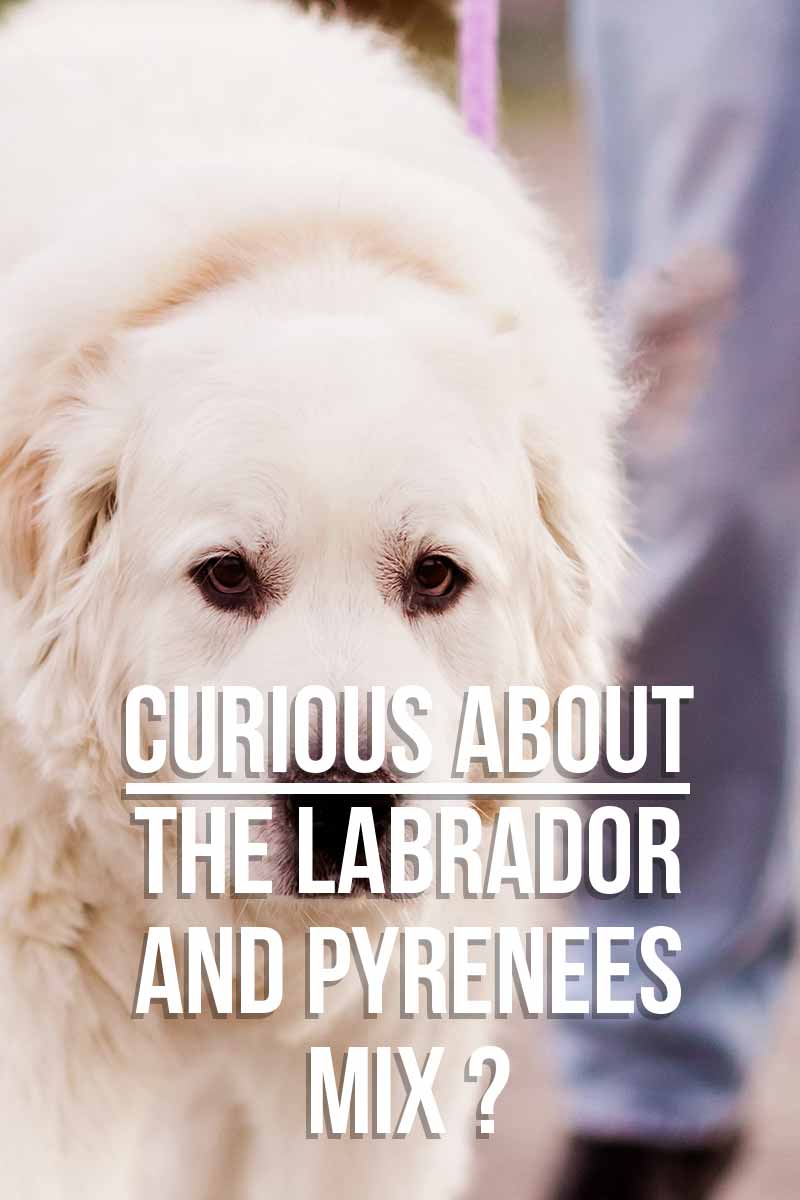
Great Pyrenee Health and Care
Because the Pyrador is a cross between the Lab and the Great Pyrenees, he could be predisposed to any of the above inheritable health issues of his purebred parents. Remember that early health screening in your Pyrador crossbreed puppy can help avoid or prepare for any future genetic problems. You can learn more about the health testing requirements as specified by the AKC for the Labrador and the Great Pyrenees here.
Labrador Health
A healthy Labrador’s lifespan is 10-12 years. As with all breeds, some health problems are passed down from generation to generation, and the purebred Lab is no exception. Some health concerns with the Lab include:
- Hip dysplasia
- Elbow dysplasia
- Cranial cruciate ligament disease
- Progressive retinal atrophy
- Cataracts
- Canine bloat
- Exercise Induced Collapse
Great Pyrenees Health
Like the Lab, the Great Pyrenees has a life expectancy of 10-12 years. However, there are some heritable health conditions to be aware of as well including:
- Tricuspid valve dysplasia
- Degenerative myelopathy
- Bloat (gastric dilatation and volvulus)
- Elbow and hip dysplasia
- Shoulder osteochondritis
- Factor XI deficiency
- Osteosarcoma
- Ectropion
- Entropion
- Progressive retinal atrophy
- and skin issues.
Pyrador Puppies
Pyrador puppies from breeders cost anywhere from five hundred to a thousand dollars. Again, the important thing is to do your research on the breeder and make sure you look into the history of the Pyrador’s purebred parents whenever possible.
Since your new pup can inherit tendencies from either parent, be sure to ask about behavioral issues and health concerns with parent dogs when looking to adopt any crossbreed. You can also ask about any health or temperamental problems with previous litters from the same parents.
Make sure to avoid puppy mills, pet stores, and backyard breeders. They often jump on mixed breed trends to make a quick profit, but there’s no guarantee these pups will be as healthy as those from reputable breeders.
The Labrador Site Founder
Pippa Mattinson is the best selling author of The Happy Puppy Handbook, the Labrador Handbook, Choosing The Perfect Puppy, and Total Recall.
She is also the founder of the Gundog Trust and the Dogsnet Online Training Program
Pippa's online training courses were launched in 2019 and you can find the latest course dates on the Dogsnet website

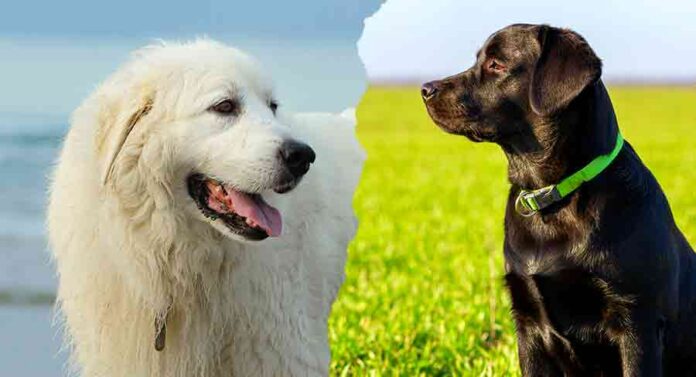
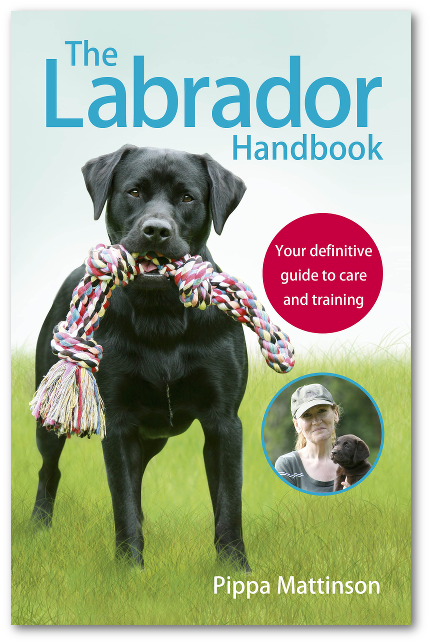




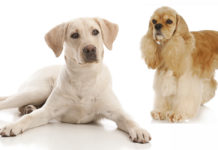


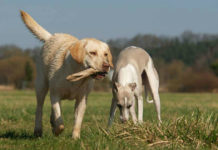









Our pyrador just turned 1 year old, hes huge haha! 85 lbs and no longer walks like a baby deer.
Hes super sweet and definitely loves to “guard”. Sits in the yard watching everything. I love having him around for our family as well, hes very friendly but also assertive. Not mean behavior or anything but for example he always puts himself between us and strangers/dogs/etc
These dogs are great and theres way more reasons than just this that prove it.
We just lost our 88 lb Pyrador. She was the best dog I have ever had. A little difficult around starters or unfrequent house guests. But the most loving animal I have ever known. Also great guard dog, not that we needed that. Super gentle to other animals.
I’m inclined to pursue another Pyr, I can’t image my life without a dog of that kind.
She was a rescue or I should say the mom was but she was one of the litter of puppies, we keep in touch with some of the other adopters and they all had positive experiences. Also, multiple genetic tests confirmed the breed.
I guess the search is on now for a breeder.
I had a pyrador Her name was Sandy she was white and had sandy ears and a spot on her back .She was one of the best dogs I’ve owned. She lived for 15 yrs she got an infection in her uterus and we had to put her down. I miss her so much and would love to get a nother one .
My Pyranees Lab mix just turned 2 years old. He’s white and fluffy and really large. He is honestly the sweetest dog I have ever seen. The mail lady brings treats every day. He loves everyone. And he is absolutely fearless. Very protective and gentle with kids. He is an absolute joy. 💚💜
I have a 4 month old and 32 lbs. pyrador. we got him at 9 weeks.he is alot like a black lab but has white feet and white on his chest. loves water. very smart and loves to be around people. gets along with our 2 other dogs .
We have a pyrador and she is the best pet we own her name is Pepper, we got her from some in Bathurst NB. she is the sweet’s dog ever never chewed never made a miss stake ,hates water but loves snow she is mostly black with long hair she love the car and she is attched to my husband hip we have 11 acers and protect every inch ,she loves people we could breath with out her . She is our baby we never had .
Love my Pyrador. Adopted him at 1.5 years and he is now 12 years old. I am beginning to worry as his hind legs are failing, though he healthy in every other way. He takes Glucosamine and Prednisone every day and this seems to help. I am so worried that soon he will not be able to stand up then I won’t know what to do because he is over 100lbs. I have been reading articles and perhaps he should lose some weight – though he is not obese at all. The vet told me that 12 is an old ripe age for such a big dog – so this does not help much.
If you have some helpful ideas on what to do when he cannot stand up, please let me know. Thanks.
We have a Pyrenees/lab mom Pyrenees and dad white lab and we got a brindle male just under 7 months and around 70lbs and short hair we got him at 9 weeks,he’s my second pryador my first was size and look of a Pyrenees but very light yellow and I mean very light,winter he would go even lighter and fur was short but thicker than the lab was about 110-120lbs
Have a almost 12 yr old very healthy and still active pyrador that we adopted at 12 weeks. He has been the best dog! Similar temperament to a Great Pyrenees (independent thinker, barks at butterflies across the street, super loyal, friendly and gentle) and a certified volunteer therapy dog. We love him so much that we just adopted another – an 18 week old pyrador this weekend. He seems to have slightly more lab tendencies so far – super cuddly but definitely seems like a chewer!
Wow… Our dog, Grettel of 13 years was a lab/pyrenees mix. She was golden color…..110 lbs….tail and face like a pyrenees. She was the best bird hunter out of the group of well trained bird hunting dogs that she went with. She was a natural and loved it. Always had her nose in the air. She was very loving, gentle and happy to be around people. She was also stubborn and ignored our commands but our Welsh Corgi taught her the way of the farm and she became quite obedient and trustworthy. Miss her so much and would definitely consider another one.
Just adopted a pyrador. Male named Milo two months old reddish tan with white feet and black ears and nose. Love him. He talks back when I tell him no
Considering adopting a Pyrador. Have a choice between 2, 10 week olds – brother and sister. I’ve had Labs – but never Pyr. Any advice on the male or female? I’d take both – but the agency has a policy against adopting out puppy siblings.
I have a 5 year old pyrador, Judy, she’s a real love, she weighs 95 pounds and is fantastic around other Dogs and folks, fantastic family protection n loves kids, actually anyone that gives her attention 😂
I’ll definitely get another pyrador, I’m looking for one as a playmate for Judy! Good luck
Hello Dave,
Just need your expert opinion as you must have seen your baby Judy grow over the period of time. Our puppy Coco who was 23lbs at 12weeks when we rescued him (with no background except for his age), he is now 19 weeks and weigh 47lbs already, I am worried as are we feeding him more than what he needs as he always seems to be hungry and highly food motivated, so we use lots of his kibble for his training and enrichment play time!
did Judy grow in this rate as well and when did she stop growing ?
I understand every dog is different more because we do not have much background of Coco..but we were told that he is a Pyrador and 12 weeks old.
Considering adopting a Pyrador. Actually have my choice between puppies (a brother and sister from the same litter). I’ve had Labs, but never a Pry, let alone a Pryador. Wondering if there’s any reason to consider one over the other. Presumably the male will get larger, and obviously the personalities need to be considered. But is there any other advice on whether to get the male or female?
our pyrador will be 6 in January. we got her from a shelter. she is as cute as a black lab, never does any thing we ask, although we know she understands and loves to swim i our pool! everybody loves Gracilou!❤️
I have a one year female Pyrador I rescued from being put down at only 3 months. She’s white with a ever so slight hint of pale yellow, if you look closely. She looks like a White Lab. She’s a sweet girl. Independent, won’t come when called. (I’m working on that). Absolute loves children and anyone who comes to visit. She’s pretty chill. I brought her a kitten from the barn so she wouldn’t be so sad when I leave her to go to work. They’re best of friends. Very intelligent. She learns doggy tricks in seconds. She won’t chew or mess with my things. Strange she knows the difference, but will destroy the cat’s collar,(every time I get him a new one) cat and dog toys, and of course dinosaur sized bones. Lol Barks at everything. Absolutely love her! Working on the negatives.
Just got a male parador, he looks like a black lab, he’s a joy to have around?, loves to chew, very stubborn, intelligent
I just now learned that my late great Rascal was a Pyrador. He came from a litter of pups we raised around fourteen years ago. The female lab was ours and was bred to a Pyrenees a neighbor had all by chance. I picked Rascal out as he was one of the whitest males. I just want to say that that was one of the luckiest choices in my life. I love and miss him so much. Died 11 Dec. 2017
I have a 4yr also fabulous dog 120lbs and very active , his growl is frightening but he wouldn’t hurt anything; loves kids.people cats. He came from a large litter in midland Ontario curious if anyone else has one from there Two separate mother’s had a total of 19 At the same time great Disney movie let me know and I’ll send you pictures
I have a one year old pyrador and i use her for a esa dog she is around 55lbs and a great dog hates water, not like taking baths still has a little bit of a chewing problem but not as much as when i first got her, hates being by herself, gets along great with my cat, and is friendly with people and her half brother who lives down stairs from me i love her a lot and wouldn’t give her up for the world.
Thanks for the article. Just learned my dog is called a pyrador. I have a 4 year old that is 90 pounds, body, coat, and feet of pyrenees, face and legs of lab, independent, protective, hates water/likes snow, no chewing issues, lastly friendly with dogs and people.